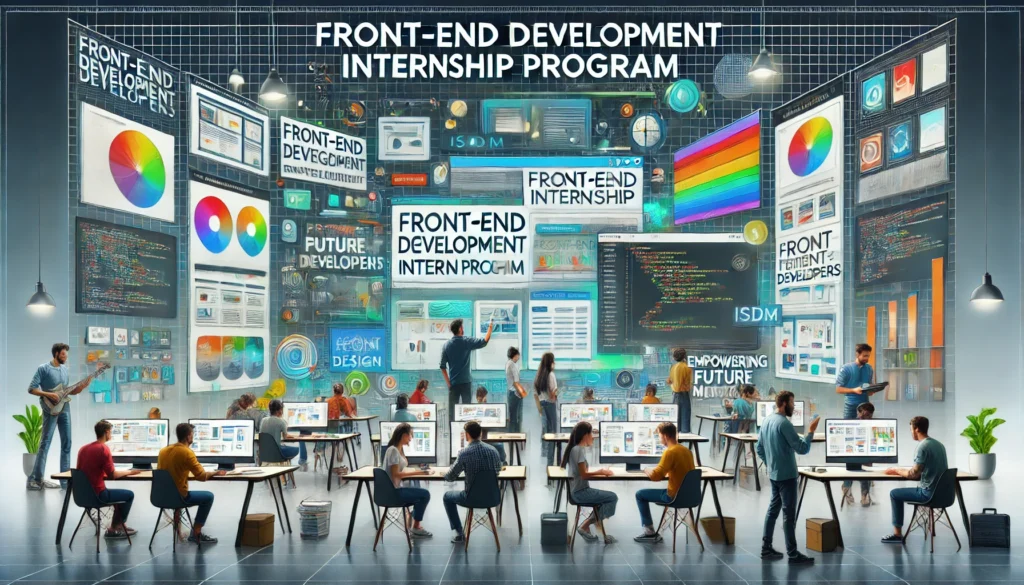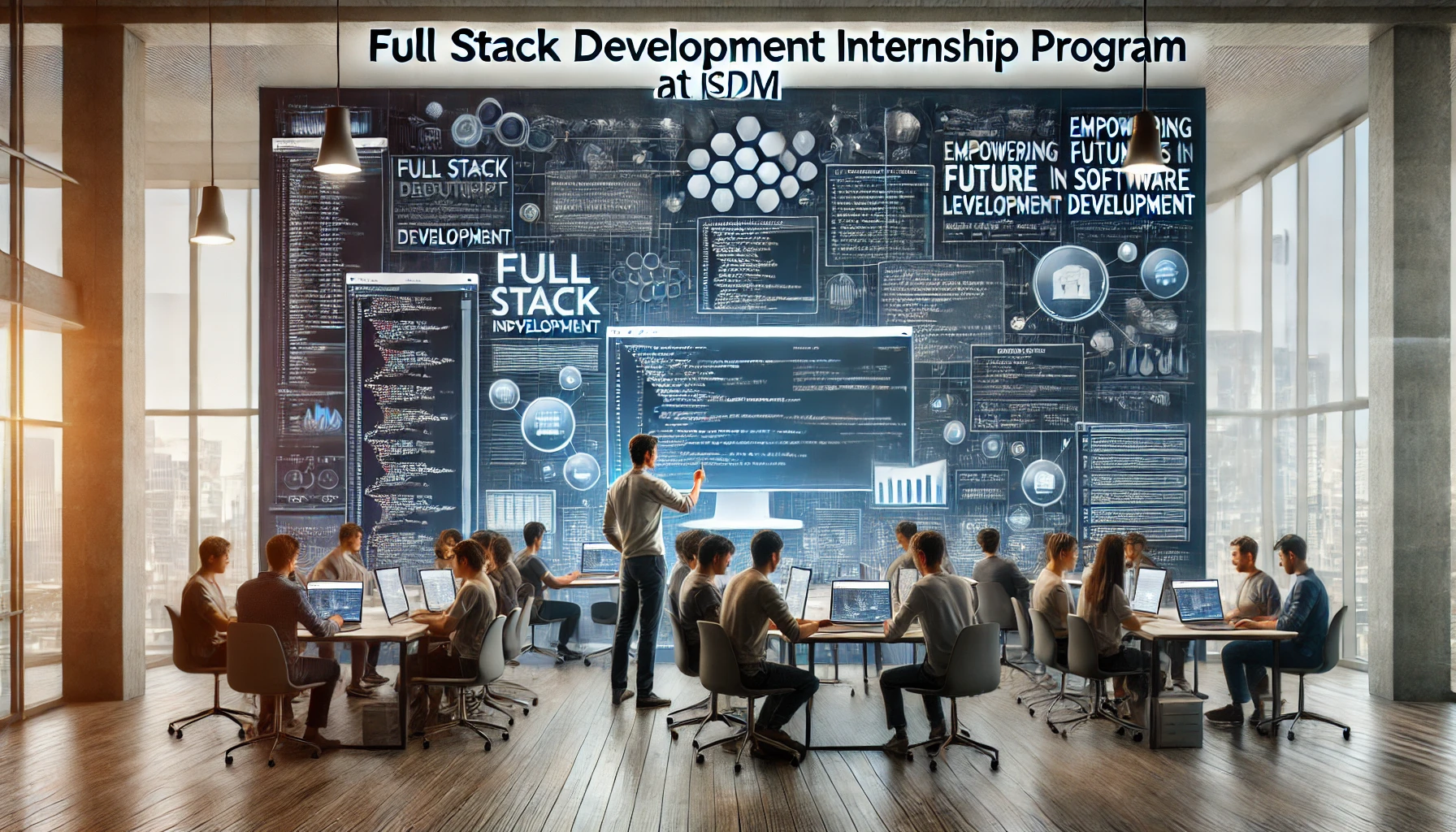Introduction to Front-End Development Internship Program
The Front-End Development Internship Program is designed to equip aspiring web developers with the practical skills and experience needed to build dynamic, responsive, and visually appealing websites. This 30-day intensive internship focuses on core front-end technologies like HTML, CSS, JavaScript, and popular frameworks like React or Angular. Participants will gain hands-on experience through practical sessions, live projects, and continuous feedback, preparing them for a successful career in web development.
Program Highlights:
- Practical Sessions: Daily modules focused on hands-on development tasks.
- Live Projects: Real-world projects to build portfolios.
- Certification: Awarded upon successful completion.
- Internship Report: A comprehensive report summarizing your progress and project outcomes.

Front-End Development Internship: Day-wise Modules
Week 1: Fundamentals of Web Development
- Day 1: Internship Orientation & Tools Setup
- Introduction to the internship program and front-end development.
- Setting up the development environment (VS Code, Git, Browsers).
- Overview of web development tools and version control.
- Day 2: Introduction to HTML5
- Basics of HTML5: Structure, elements, and semantic tags.
- Creating a simple webpage layout.
- Practical: Build a basic HTML page.
- Day 3: Advanced HTML & Accessibility
- Forms, tables, and multimedia elements.
- Importance of accessibility in web development (ARIA labels).
- Practical: Creating an interactive HTML form.
- Day 4: Introduction to CSS3
- Basics of CSS3: Selectors, properties, and styling rules.
- Inline, internal, and external CSS.
- Practical: Style the webpage created on Day 3.
- Day 5: Advanced CSS3: Layouts and Flexbox
- Flexbox for responsive design.
- CSS Grid and media queries for layout control.
- Practical: Build a responsive webpage using Flexbox.
- Day 6: Introduction to Bootstrap
- What is Bootstrap and why use it?
- Responsive grid system and Bootstrap components.
- Practical: Implement a responsive website using Bootstrap.
- Day 7: Project 1 – Static Website Design
- Begin working on a static website for a portfolio project.
- Focus on HTML and CSS implementation.
- Review and feedback session at the end of the day.
Week 2: Introduction to JavaScript & DOM Manipulation
- Day 8: Introduction to JavaScript
- JavaScript basics: Variables, data types, and operators.
- Control structures (if/else, loops).
- Practical: Create basic JavaScript scripts.
- Day 9: Functions and Events in JavaScript
- Functions, scope, and event handling.
- Practical: Create a simple calculator using JavaScript.
- Day 10: DOM Manipulation
- Introduction to the Document Object Model (DOM).
- Selecting and modifying HTML elements using JavaScript.
- Practical: Create interactive elements by manipulating the DOM.
- Day 11: JavaScript Objects & Arrays
- Arrays and objects in JavaScript, and how to use them.
- Practical: Build a dynamic to-do list.
- Day 12: Introduction to APIs and AJAX
- Understanding APIs and making HTTP requests with AJAX.
- Fetch data from external sources and display it on your webpage.
- Practical: Fetch data from a public API and display it on a webpage.
- Day 13: Project 2 – Interactive Web Application
- Begin building a simple interactive web app (e.g., weather app).
- Focus on implementing JavaScript for interactivity and data fetching.
- Day 14: Project Review & Feedback
- Complete the interactive web application.
- Review code and functionality, provide feedback.
Week 3: JavaScript Frameworks & Version Control
- Day 15: Introduction to JavaScript Frameworks (React Basics)
- Overview of React.js and component-based architecture.
- Create your first React component.
- Practical: Build a simple React application.
- Day 16: React Props and State
- Introduction to React state and props for dynamic data handling.
- Practical: Create a React component with dynamic content.
- Day 17: React Router and Conditional Rendering
- Using React Router for navigation between components.
- Practical: Build a multi-page React app using routing.
- Day 18: Git and GitHub for Version Control
- Introduction to Git, GitHub, and version control basics.
- Working with branches, commits, pull requests, and merges.
- Practical: Set up a GitHub repository and collaborate on code.
- Day 19: Project 3 – React-based Web Application
- Begin building a dynamic web application using React.
- Implement props, state, and routing.
- Day 20: Project Review & Collaboration on GitHub
- Continue working on the React project and push changes to GitHub.
- Peer review and feedback session.
- Day 21: Mid-Internship Presentation
- Present progress on React project and discuss challenges and solutions.
- Receive mentor feedback for further improvement.
Week 4: Advanced Front-End Development & Final Project
- Day 22: Introduction to Front-End Testing
- Unit testing in JavaScript using tools like Jest.
- Practical: Write basic test cases for JavaScript functions.
- Day 23: Responsive Web Design with CSS Media Queries
- Advanced media queries and responsive design techniques.
- Practical: Optimize a website for various screen sizes.
- Day 24: Performance Optimization for Front-End
- Techniques to improve website performance: Lazy loading, minification, and caching.
- Practical: Optimize an existing website for speed.
- Day 25: Introduction to Webpack & Build Tools
- Overview of build tools like Webpack for bundling and automation.
- Practical: Set up Webpack for a React project.
- Day 26: Deployment and Hosting
- Deploy your web application using platforms like Netlify, Vercel, or GitHub Pages.
- Practical: Deploy a live version of your React app.
- Day 27: Final Project Kickoff
- Start working on the final capstone project (e.g., a portfolio website, e-commerce front-end).
- Choose between various project options (team or solo).
- Day 28: Continue Working on Final Project
- Implement feedback from mentors and peers.
- Finalize design and functionality.
- Day 29: Final Project Submission
- Complete the final project and prepare for the presentation.
- Conduct a final code review and performance checks.
- Day 30: Final Presentation & Internship Report Submission
- Present the final project to mentors and peers.
- Submit the internship report summarizing learnings, challenges, and project outcomes.
- Certificate distribution and internship completion ceremony.
This structured Front-End Development Internship ensures that participants gain both foundational and advanced skills in front-end development through real-world projects and hands-on coding sessions, culminating in a portfolio-worthy final project and certification.











